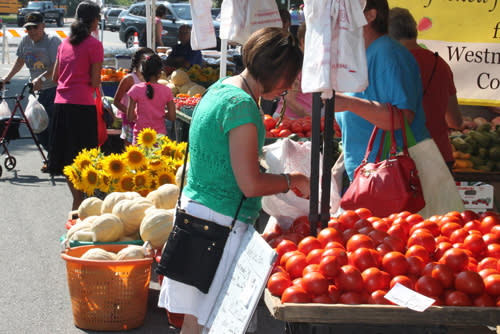
As delicious local summer and fall produce reaches its peak, you might want to check out the bounty that can be found at our local farmers’ markets. These markets offer a wide variety of locally grown and produced fruits and vegetables, flowers, dairy products, baked goods – even soaps, jams and pickles! Wear your walking shoes and bring a basket or shopping bag, because you never know what treasures you might find as you support our local farmers and businesses.
- The FRESHFARM Farmers Market at the Boro is located in the heart of Tysons in the new Boro residential and shopping district off of Route 7. You can find it behind the Loft Building at 8399 Westpark Drive on Thursdays from 3:00 pm to 7:00 pm through October 28th. Read more here.
- The Falls Church Farmers Market To Go is open every Saturday from 8:00 am to Noon. It is located at 300 Park Avenue, Falls Church. Additional information can be found here.
- The McLean Farmers Market is open every Friday through November 12 from 8:00 am to Noon. It is located at 1659 Chain Bridge Road, McLean. Additional information can be found here.
- The Vienna Farmers Market, sponsored by the Optimist Club of Greater Vienna, is open Saturday mornings through October 30. It is located at the Vienna Community Center, 120 Cherry Street, SE, Vienna. Additional information can be found here.
- The NOVA Central Farm Market is open year round on Sundays. April through December hours are 8:30 am to 1:00 pm. It is located at the Church of the Holy Comforter, 543 Beulah Road, Vienna. (The Church of the Holy Comforter is a member of Tysons Interfaith.) Additional information can be found here.
- The FRESHFARM Farmers Market Mosaic is open Sundays through December 26, 9:00 am to 2:00 pm. It is located at 2910 District Avenue, Fairfax. Additional information can be found here.
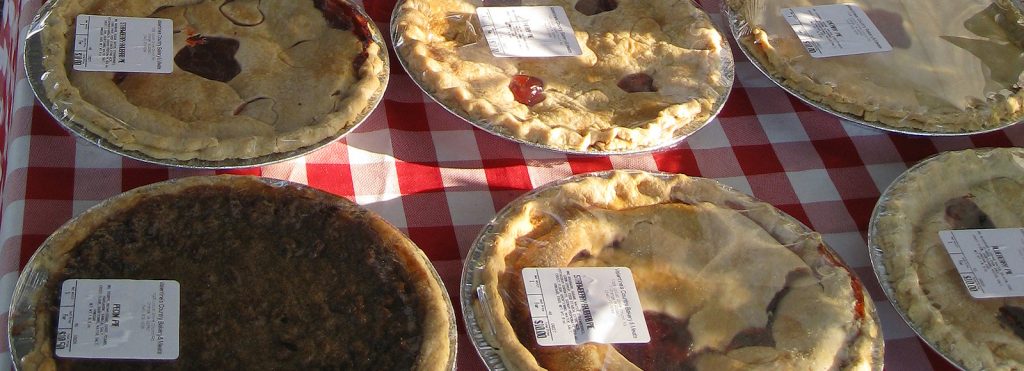
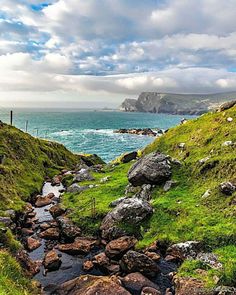
Someone once told me, I don’t know if it’s true, that the Tao Te-ching (Dao De Jing) the classic of Chinese Taoism (Daoism) has been translated more times than the Bible. Well, here’s my translation of the first few lines, modified from that of the great Christian missionary, James Legge, whose poetic rendering of the middle lines I leave intact:
The Tao that can be spoken of is not the enduring and unchanging Tao.
The name that can be named is not the enduring and unchanging name.
The unnameable is the Originator of heaven and earth;
the nameable is the Mother of all things.
Always without desire we must be found,
If its deep mystery we would sound;
But if desire always within us be,
Its outer fringe is all that we shall see.
Evolving from these two aspects, which are really the same,
we differentiate them.
Together we call them the Mystery of Darkness.
Where the Darkness is the deepest is the gate of all that is subtle and wonderful.
Until recently, the Chinese have followed the ideas and beliefs of Confucius, who did not have much time for religion, which he mocked once as being overly concerned with “ghosts.” But right from the outset, and this was a very long time ago, the Chinese knew something was missing, so a group of mystics grew up in radical opposition. And later the Chinese embraced Buddhism until finally the Confucians threw in the towel and created a synthesis called Neo-Confucianism, which lasted until the Communist Revolution.
Well, Confucius also said,
“At fifteen, I had my mind bent on learning. At thirty, I stood firm. At forty, I had no doubts. At fifty, I knew the decrees of Heaven. At sixty, my ear was an obedient organ for the reception of truth. At seventy, I could follow what my heart desired, without transgressing what was right.”
I’m not quite seventy, but I’ve been receiving a lot of truth lately, so here comes my take on the Mystery of Darkness and nothingness.
From the Jewish commentary on the first lines of Genesis, we have the following:
Rav said . . . In customary practice, when a king of flesh and blood builds a palace on sewers, dung, and garbage, if someone comes and says, “This palace is built on sewers, dung, and garbage,” does he not pronounce it defective? So too, if someone comes and says, “This world was created out of chaos and waste [tohu wa-bohu],” does he not pronounce it defective? Rabbi Huna said in the name of Bar Qappara: Indeed if the thing was not written in Scripture it would be impossible to say it! “In the beginning God created heaven and earth”—Out of what?—“the earth was chaos and waste [tohu wa-bohu].”—Genesis Rabbah 1:5
So, in both the Judeo-Christian and Chinese tradition there was a primordial darkness, void, or apparent chaos at the beginning of creation. What God’s followers have been trying to do ever since is to advance God’s perfect kingdom on earth. The Taoists believe, apparently, that this is folly, because good and evil are bookends, like Yin and Yang. And the Buddhists warn that all is suffering. For the People of the Book, and that includes our Muslim sisters and brothers, this simply will not do. Where there seems to be agreement among the traditions, however, is a deep and abiding respect for the “Originator of heaven and earth.”
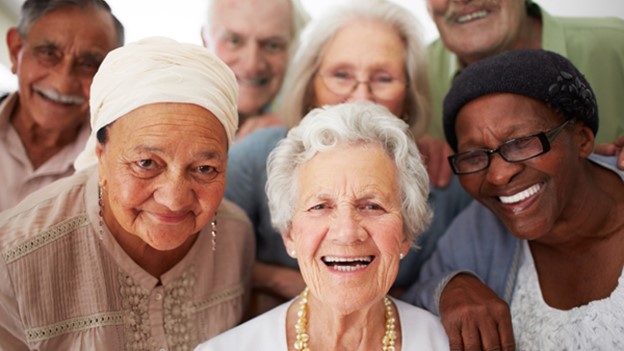
Did you know?…….. The National Council on Aging has a wonderful tool for exploring benefits that are available for seniors that they may not be aware of. According to the National Council on Aging, there are 2,500 benefit programs for seniors nation-wide. Their on-line tool enables seniors (or volunteers/family members helping them) to explore programs that may be available to them in their local area. The types of programs that exist for qualifying seniors may include medication and other health care cost assistance for items such as copays and deductions; income and pension assistance; food and nutrition assistance; housing, transportation, and utilities assistance; tax relief; veterans programs; employment tools; respite care; parks and recreation discounts and educational programs.
Not only is this a great opportunity for seniors to learn about programs that may be available to them, it is also a great tool for individuals, faith communities and others who would like to volunteer their time and talent to help our seniors access these helpful benefits.
For more information, please visit: https://www.benefitscheckup.org/
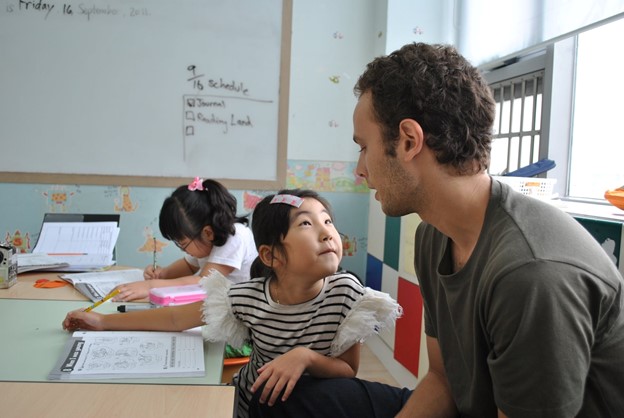
The Republic of Korea or South Korea is special in that it is the only Peace Corps-recipient country to create its own similar agency (KOICA) and because we got there late when the poverty most Americans expect to see in places we send our volunteers was disappearing. They also have more Christian missionaries around the globe today, second only to us. Here are some photos dating back to my days in South Korea as a Peace Corps volunteer: a typical bus ride; a look out from inside such a bus; a traditional house found only at museums now:
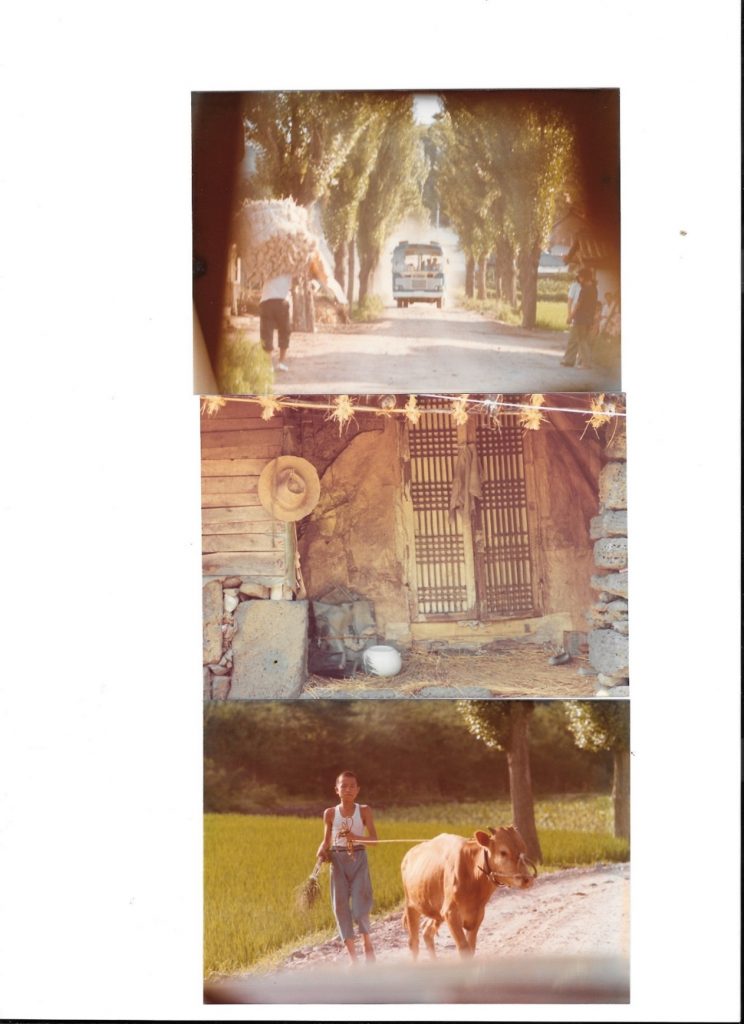
More follow of old men at Heiinsa (Buddhist) Temple, home to the oldest print blocks (Buddhist scriptures) in the world (and you thought Europe invented printing); a sign suggesting there was good reason for us English volunteers to be teaching middle school in the first place (the “23th Century” bit should read “In Year 23 of the reign of King Kong Min of the Goryeo Dynasty” — that’s 1371 CE by the way, the king and his dynasty fading away not long after); and how the typical Korean middle school student approached learning English back then:
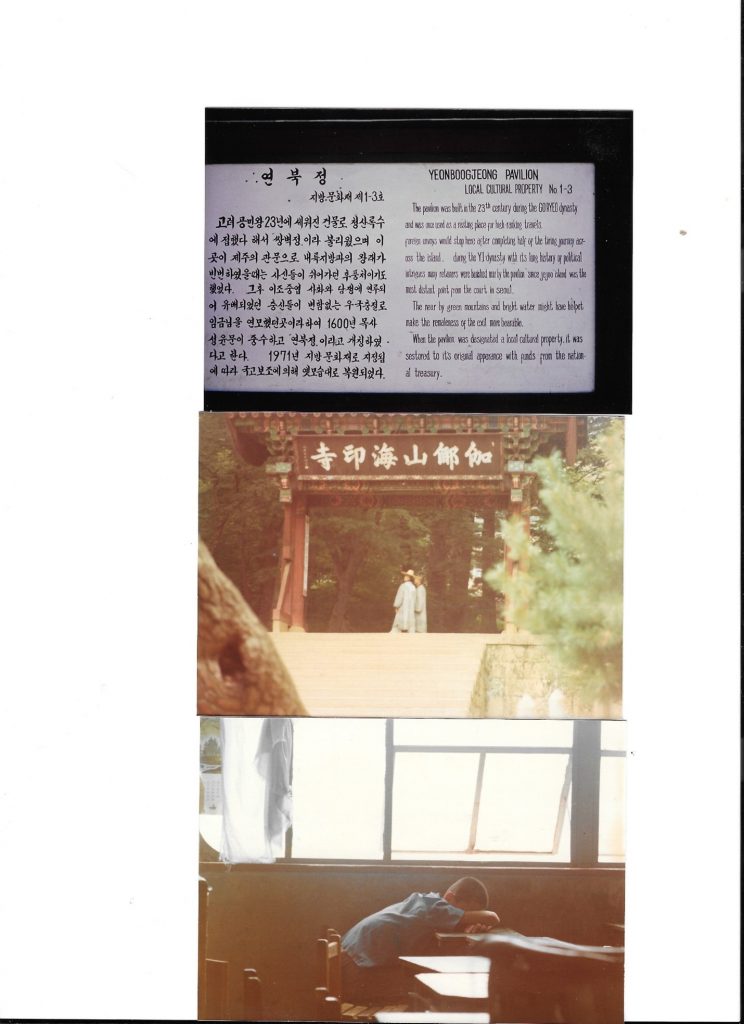
But then look at this recent photo showing a cute elementary school girl student rapt in attention at the teaching of the hip son of a K-30 Peace Corps volunteer (we instantly date each other by our group number):

A good many years have elapsed since my days in the Peace Corps and his. But the beauty of the endeavor is still the same.
Some of us from my K group and a few others had a reunion of sorts recently enjoying each other and being unmasked in the beautiful sun of Front Royal. Lots of Korean and American food and drink. Our old Peace Corps Korea Director was there, and as our eyes rolled, he famously again lectured us on the importance of these sacrosanct Peace Corps goals:
1. To help the people of interested countries in meeting their need for trained men and women.
2. To help promote a better understanding of Americans on the part of the peoples served.
3. To help promote a better understanding of other peoples on the part of Americans.
There is an obvious connection to what Tysons Interfaith is about. Promoting better understanding between people wasn’t a bad idea then and it ain’t such a bad idea now, either.

It may seem strange to talk about spirituality and Chinese communism, but an article posted by a former colleague on LinkedIn recently got me thinking about my days as an economic officer in our embassy in Beijing more than 20 years ago.
Back then I often hung out in a crowded, run-down “salon” bearing the unusual name of the Unirule Institute of Economics ( 天則經濟研究所) UNIRLE (unirule.cloud) I was the only foreigner in the crowded room listening to the debates between the economists and lawyers from all over China. One day one of the founders, Mao Yushi (no relation to the Chairman and the name just happens to be spelled the same in English) invited me to his home, the first private residence I had ever seen: an apartment worth a lot of money today.
Professor Mao made some tea and we sat for a bit. At one point he said, “Let me tell you something about the Communist Party: there are ‘free thinkers’ like me who are supposed to talk to people like you and give our best advice to the decision-makers who can’t talk to you or let you know what they are thinking.” It was an epiphany.
I was saddened to learn recently that after flourishing for many years after I left Beijing, in 2013 Professor Mao got into trouble for writing an article calling for Chairman Mao to be reevaluated and for his body to be removed from his mausoleum. There’s even a Youtube video showing Party members chanting “Down with the traitors [former premier] Wen Jiabao and Mao Yushi.” And in 2019, Chairman Xi Jinping finally shut him down altogether. Well, Professor Mao did win the Cato Institute’s Milton Friedman Prize for Advancing Liberty. (The Milton Friedman Prize for Advancing Liberty | Cato Institute).
In an interview with Radio France International’s Chinese service on the occasion of his 90th birthday, Professor Mao said this (my translation): “You asked me if I’ve ever wanted to live in a different time or in a different country? Well, of course, if I had the choice I’d love to go to America. But that’s my individual concern. I’m not thinking only of myself; I’m thinking of everyone. Can everybody go to the States? Of course not. But what is possible is to reform our country so it’s a bit more like America. That is both possible and worth striving for with all one’s might.”
I never talked to Professor Mao about religion, but like all good Communists he probably considers himself a materialist. Still, it is interesting that the term “unirule” is an awkward translation of a classical Chinese concept that other famous Western scholars have translated as “heaven.” One passage in the Confucian Record of Music was translated by a renowned Scottish missionary like this:
When one has mastered completely (the principles of) music, and regulates his heart and mind accordingly, the natural, correct, gentle, and honest heart is easily developed, and with this development of the heart comes joy. This joy goes on to a feeling of repose. This repose is long-continued. The man in this constant repose becomes (a sort of) Heaven. Heaven-like, (his action) is spirit-like. Heaven-like, he is believed without the use of words. Spirit-like, he is regarded with awe, without any display of rage.
Like the Chinese Communist Party, the Confucians didn’t talk about religion, but for a guy who loves singing in the choir at my church, the passage is music to my ears. Maybe we should translate “unirule” as “oneness of humanity?”
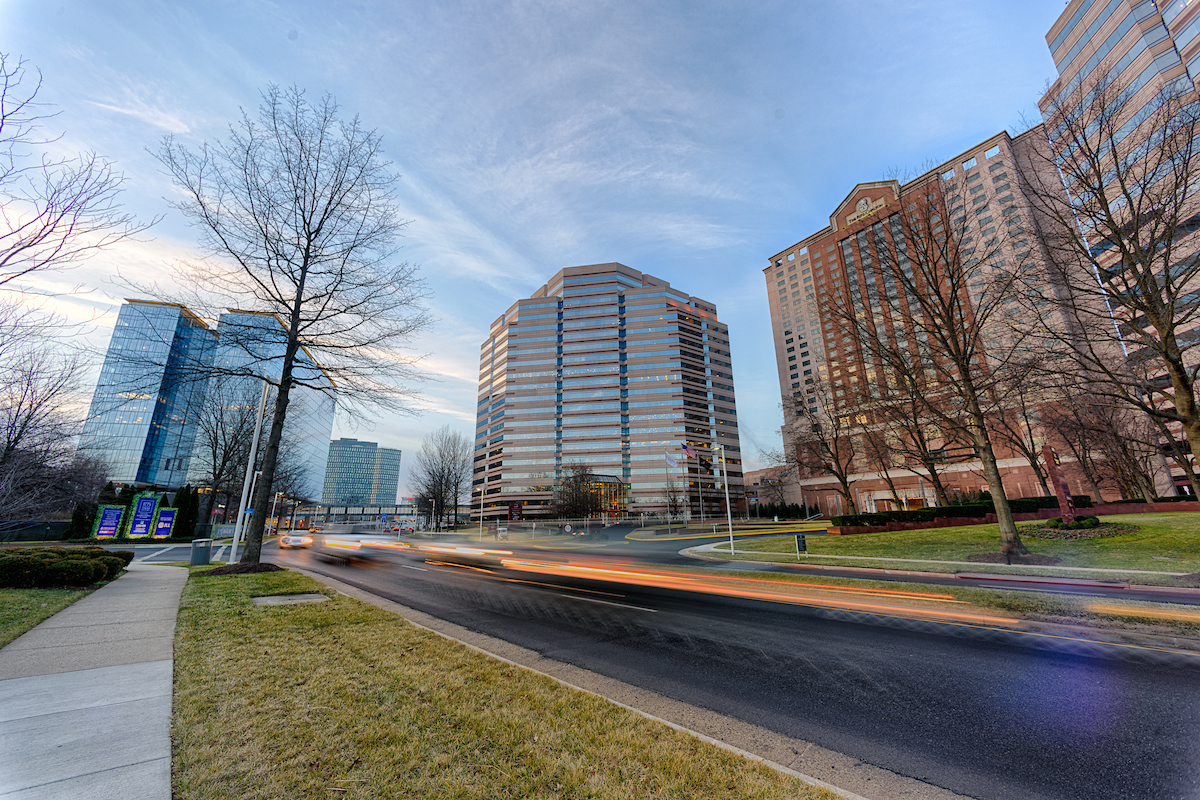
This past month, Peter Bartholomew, an old acquaintance of mine from my Peace Corps Korea days passed away suddenly. Peter was no ordinary guy, as the attached obituary by Andrew Salmon attests: Asia Times: Guardian of Korean Heritage Passes. It’s long, but very juicy and worth reading, particularly the passage about fights between developers and preservationists. “Developers cleared Seoul’s higgledy-piggledy little alleys and tiny hanok to make way for the steel-and-glass commercial towers and soulless apartment complexes that dominate today’s city.” In a tribute to Peter, one Korean-language paper used this as the headline: “An American who loved Korea more than Koreans.” What a legacy.
We don’t have the same issues that Peter gleefully fought in Seoul, but there are some in my neighborhood who resist the “infill” taking place and the plan to turn McLean into a “mini Tysons.” They don’t want to change the “soul” of the neighborhood. Similarly, I know many are hoping that Tysons, as it develops over the next thirty years, will be purposeful in preserving natural settings and developing physically pleasing and connecting spaces for the humans who will live and work there.
I share with you this image of McLean Central Park where I walked our grand dog just the other day. Off the main path I found this amazing shrine placed there apparently by a group of teenagers.

I’m of two minds about the park improvement project, which among other things will bring us an amphitheater to compete with other venues in Tysons. I like the woods just the way they are. And wouldn’t it be nice if there were someplace in Tysons where kids could do something other than play soccer on artificial turf, maybe putting up a shrine like this, even if it’s to an anime character?

Buddhist holidays are a little bit confusing because different traditions recognize different dates, but…
The biggest and most important holiday celebrated by all Buddhist schools is called Vesak (Vesakha), along with some other local names. All Buddhist schools agree it’s the Buddha’s birthday. Two out of the three major lineages recognize it as the Buddha’s birthday, enlightenment day, and the day of his passing away. It’s traditionally celebrated on the day of the full moon in May (this year May 26), but celebrations occur throughout May and early June.
On Vesak Day the Buddhist temples are decorated with flags and flowers, and devotees assemble in temples for ceremonial rituals. There are often candlelit processions in the evening. Buddhists pay homage to Buddha by following his teachings. On Vesak, Buddhists try to practice love, peace and harmony by participating in volunteer and civic activities that benefit all humanity.
If you have a Buddhist friend, feel free to wish them a fruitful and spiritually refreshing Vesak Day on May 26th.
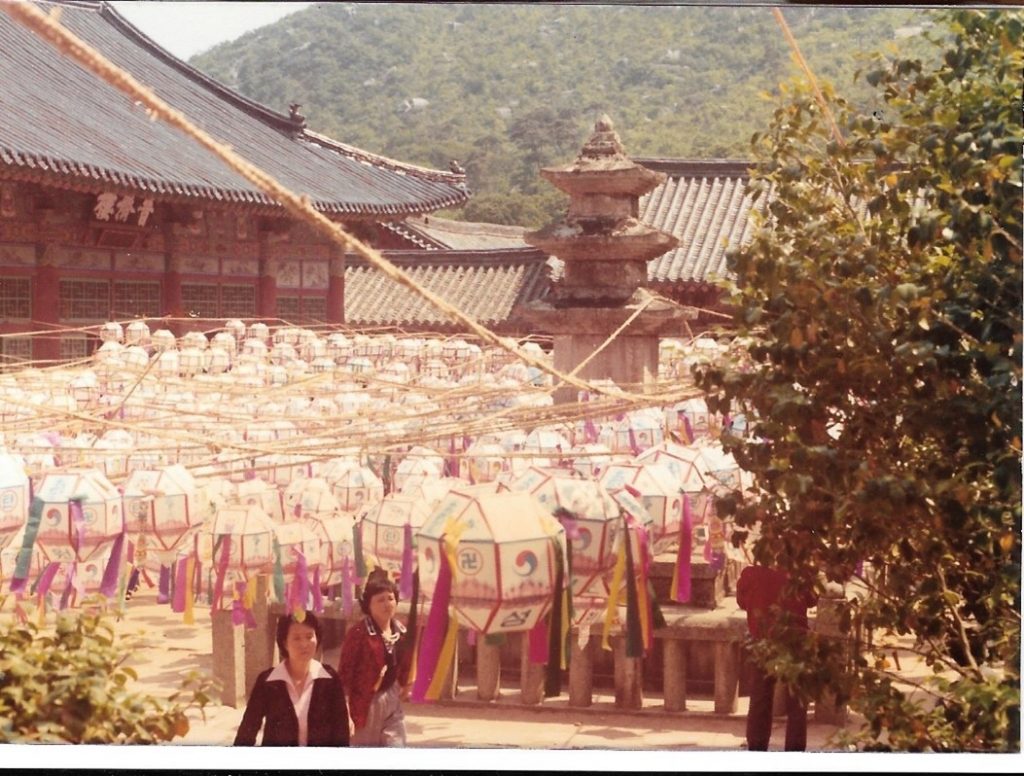
Buddha’s birthday in Busan at Jinjing Temple, circa 1977

During the most locked-down parts of the pandemic, I didn’t write a book, start a new hobby or make bread. I ate a lot of carbs, sewed some masks, and went on a months-long internet deep dive into historical fashion.
To help me face long days of pandemic ministry, the stress of tech problems, and wading through worship safety precautions, I turned to YouTube to de-stress. I found myself watching more and more (Euro- and US – centric) historical fashion YouTube channels, specifically covering roughly 1790 – 1900, such as Bernadette Banner and Abby Cox, plus following Instagram accounts such as “Not Your Mamma’s History.” As I binged these channels to escape the general pandemic mental breakdown, I started noticing time periods in films based on women’s clothing shape and style.
Fast forward to our current era, spring of 2021, and some of us are emerging from the covid cocoon. Many of us, myself included, are trying on our professional clothes that have not seen the light of day in an entire year… and discovering not everything fits the way it used to. I see post after post all over social media lamenting how our bodies have changed during the pandemic. Even those of us who intentionally attempting to have better relationships with our bodies, myself included, are struggling. Many of us find ourselves in need of new clothes, but this is not a reason for a new wardrobe that our culture has deemed to be “fun” or “good.”
I want to let you in on some timely learnings from my historical clothing deep dives that has saved my own sanity: throughout much of history, women’s fashion has built-in allowanced for bodies to change over time. Existing European and American historical garments have obvious alterations from year to year – both letting out and taking in, to accommodate our body changes in several ways – lacings for stays and corsets (also a deep dive all by itself), buttons, pins, drawstrings, gatherings, and pleats. Seasonally, it was normal for women (and men) to have new garments specifically tailored and have existing garments refashioned. Size wasn’t nearly as important as it is now – in fact, bodies of all shapes have been existing and admired in all historical periods! Instead, shape and proportion were held up as the beauty standard and could easily be achieved with both cinching AND padding for women of all shapes and sizes. Yes, women of any body type used padding to create and enhance whatever fashionable shape was in vogue at the time.
Again, fast forward to current day, and our clothing is less forgiving and less easily tailored than it was in the past. Normal yearly, monthly, and even daily fluctuations are not accommodated, especially in synthetic garments and “fast fashion.” On top of this, our bodies by themselves are expected to achieve beauty perfection in both size and shape all on their own, without the help of structure or padding provided by our clothing (as it had in the past). This is a lose-lose situation, and this reality has only been compounded by our communal pandemic body changes.
My historical fashion Covid escapism has reinforced to me that my God-created body is good and healthy just the way it is. As I struggle sorting my clothes that fit differently now, I try to make my mantra instead of “Why doesn’t this fit like it used to??” into “My body is good. It has gotten me through this pandemic.” However, this is hard. So, as I purge, I am working toward using this moment as an opportunity to curate not just a new wardrobe, but a new KIND of wardrobe. One that honors this God-given, capable body.
As our lives begin to unfold in a new kind of re-opening, I plan to be seeking out this wardrobe. I will look for clothes that make me feel fabulous, with flexible fabrics or adjustable construction reminiscent of the past, constructed sustainably and ethically out of natural materials if possible, that will last more than a season or two. Most importantly (besides pockets), I want clothes that allow my body to breathe, fluctuate, and be alive and mobile out in the world. Strangely enough, some of the old ways have shown me that a new way is possible, which should not have been all that surprising to me. After all, my own faith tradition worships the Risen Christ, alive in a body, raised by a loving God who makes all things new.
A Prayer for Post-Pandemic Closet Purging:
Lord, have mercy!
It’s so hard to worry about what to wear in the months of sweatpants I’ve been living in (and not minding that).
My entire body has not been seen by human eyes in so long!
Lord, my middle hates these pants now,
And nothing fits as it used to –
Shirts that were pretty, but slightly uncomfortable,
Makes me want to crawl out of my skin.
Lord, have mercy, what a pile of clothes that don’t work anymore.
Help me to say, “Thank you.”
Thank you to the shirt that was useful for a time,
Thank you to the dress that helped me through leading that difficult funeral.
Thank you to the pants with the grass stain from Capture the Flag with the youth group.
Thank you to that blazer I wore to the interview that I totally rocked.
Thank you to my body that helped me make it through this difficult time.
Things are different, I am different,
But remind me that you do not love me any less. Amen.
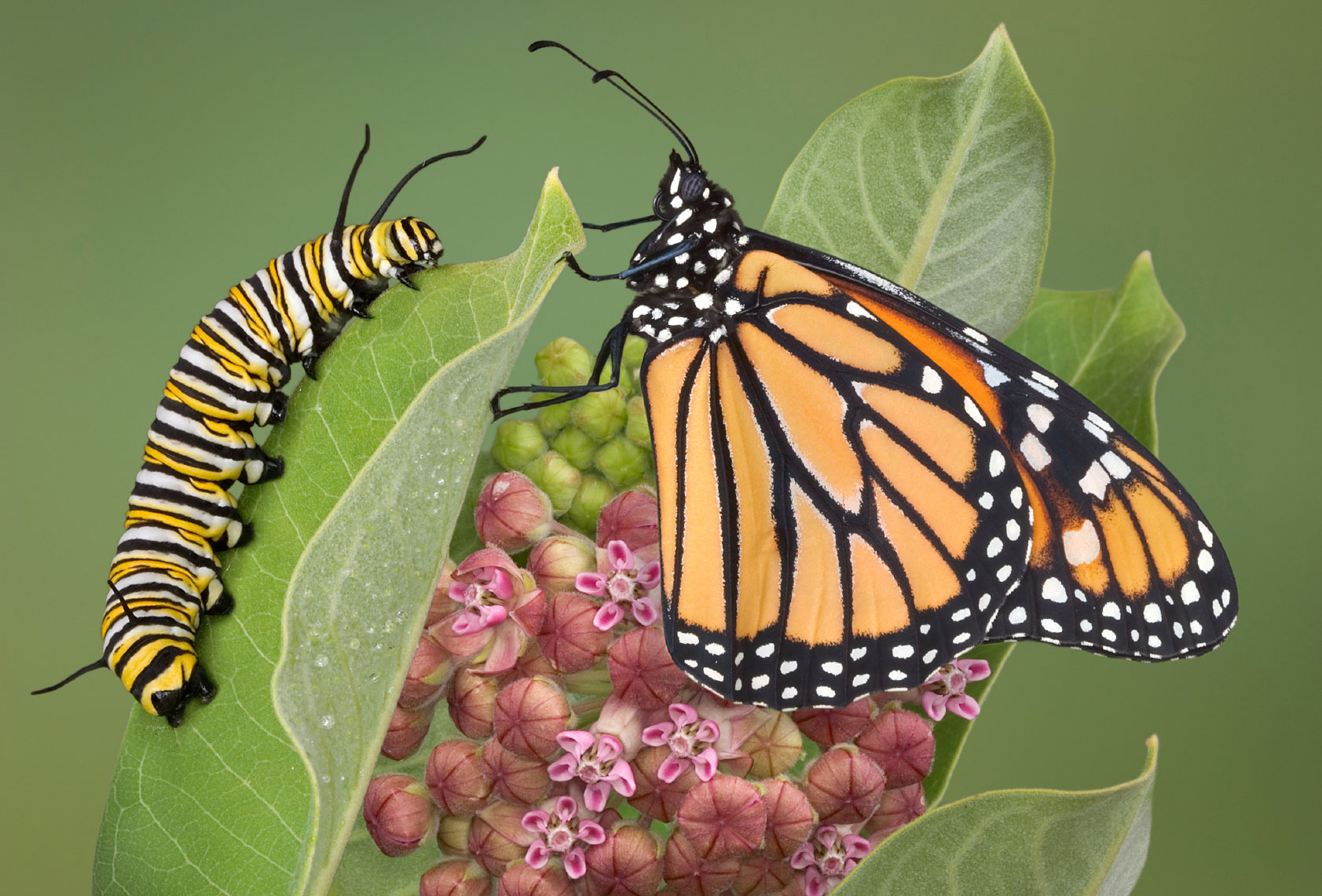
Cracking the chrysalis is one stage in our own metamorphosis, a Greek word that means transformation. It feels like we each wrapped ourselves in a cocoon about March of 2020. We had no idea what was ahead of us. I wonder when a caterpillar wraps itself in cozy silk, if it understands that the silk is going to harden into a casing and that what it believes itself to be when wrapping will never be the same? That’s rather what happened to us. Like the caterpillar, we released life as we had known it – we dissolved – and reformed as something new – or at least we have been offered the opportunity to be a new, best-yet-to-be expression of ourselves. Fortunately, although some of us may feel like our natural circadian rhythm has time-warped into a cicada’s 17-year cycle, it is time to prepare to break out of our chrysalis, to venture into being physically, socially engaged. Much progress has been made so that we can safely enter a new phase of our metamorphosis. For some people who have been pining for physical connection, it’s been way too long. For many others who adapted more deeply to the predictability of life in a cocoon, the prospect of “re-entry” is disquieting, if not outright alarming.
Considering the many changes of this past year in our external circumstances, I don’t know anyone who has declared, “Wow! Can we do this all again?” However, when we look at the personal and spiritual growth that has occurred, I am grateful – even amid the grief.
Ask yourself, “Do I possess a level of faith that makes it possible for me to lean into the unknown in order to have a greater experience of God … am I willing to be transformed?” A hesitant response is a call to dive deep with trust into that perhaps unwelcome nudge by Spirit within – the push-pull urge that lets you know shift is happening. Spirit is pressing you to make a choice and take action. An affirmative answer to the question is a giant step along the path of personal transformation – one phase of a lifelong journey – a journey that is not for the faint of heart. As you courageously lean into your individual transformation, you become a catalyst for universal transformation.
To be willing to transform is the ultimate declaration of faith. In order to open to transformation, we must be willing to let go of all that we know about ourselves, all of the identifiers that are so comfortably reassuring. Far beyond belief that often calls on conditions for validation, surrendering to transformation requires a level of trust that may be challenging. Transformation is described as a thorough or dramatic change in the form, appearance, or character. This is our metamorphosis – the dropping away of what was known. Spiritual transformation requires us to embrace a new identity, a new incarnation of which we may not have an inkling. This is the declaration, “Here I am, Lord. Use me!” without checking it out in advance to see if it is an assignment that meets our worldly concept of ourselves.
The call to transform is the call of Spirit within to align with our Spiritual Truth. It is not a call to build a new you. Nor are you being called to make temporary changes to make it easier to fit into the world around you. The call to transform is the call to come home to being fully alive. The call is to return to our natural state. In his song, “I Return,” David Ault captures what it’s all about:
I return … to the source of my creation,
opening to my place of transformation.
Now I see – Love lives in me.
Come home. Awaken to being boundless Love and Compassion.
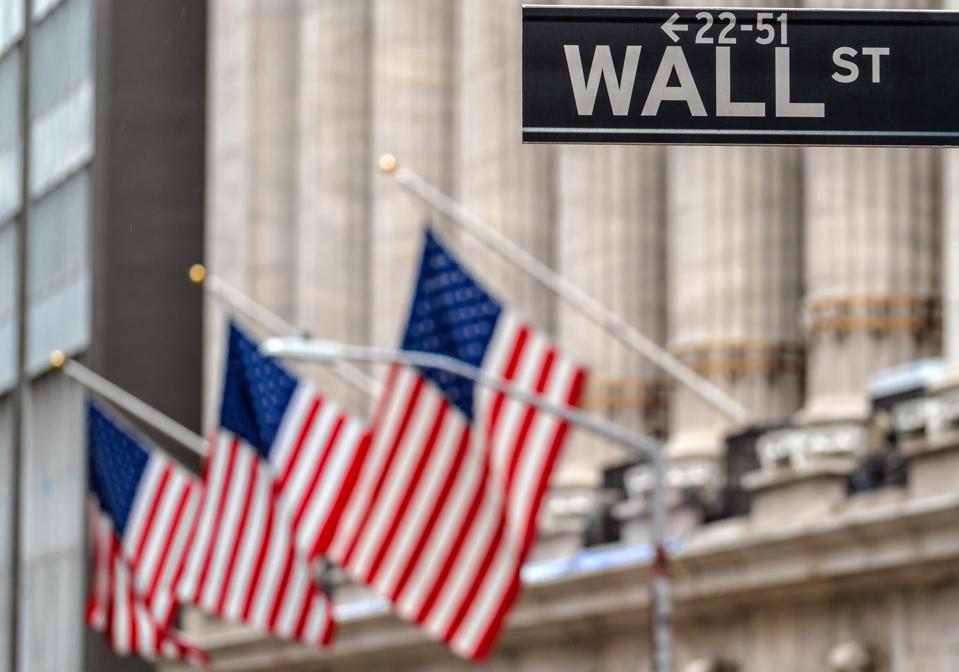
A recent article in the Washington Post literally struck home for me.
“Two Kens” are featured in an article on the front page of the May 5, 2021 Washington Post: How two Black CEOs got corporate America to pay attention to voting rights. The article notes in in passing that one of them, Ken Chenault, who was CEO of American Express for 17 – yes, that’s SEVENTEEN – years, “grew up in a middle-class Long Island neighborhood, the son of a dentist and a dental hygienist.”
Well, I grew up in the same neighborhood, sat on the bench as a freshman when Ken was a junior and a starter on the Waldorf School of Garden City basketball team, and idolized both him and his brother, Stephan, who was a year ahead of me and who gleefully jumped on my back when I was playing a pirate and he a policeman in the second act of a memorable (for me) production of Gilbert and Sullivan’s “Pirates of Penzance.”

Ken Chenault, #13; Stephan Chenault, #4 (photo obscured); the author, #20
Ken and his brother were not, like too many African Americans, recruited by my private school in mostly white Garden City, for their basketball prowess. We lived in nearby Hempstead, where I was part of the white minority and went to an old Methodist church that was similar in complexion. It wasn’t until many years later that I found out that the AME church less than a block away had finally absorbed my old church after the white congregation’s numbers dwindled because members fled to the suburbs. As a young boy, I was clueless about this stark racial divide.
My parents wanted me to go to a private school rather than be the only white kid in the nearby elementary school now named Barack Obama Elementary. Subsumed like so many African American boys in a majority white school setting, however, Ken and his two brothers went on to negotiate the perils of American capitalism. The rest, as they say, is history.
So whatever your religious or political affiliation, I can tell you from personal experience that when someone like Ken Chenault speaks, please listen with an open mind. As for me, I’m still sitting on the bench in awe of the starters.
